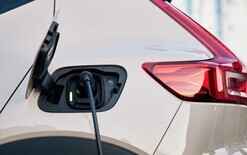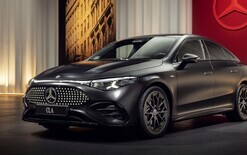Signs of market stabilising

The new-vehicle market is continuing to show signs of stabilising with registrations during March going up by 2.6 per cent year on year.
While headline sales remain steady, underlying trends point to a market in transition with “clear shifts emerging between segments”, reports the Motor Industry Association (MIA).
Aimee Wiley, chief executive, says: “Light passenger vehicles now account for the majority of registrations, supported by somewhat resilient consumer demand.
“In contrast, the commercial sector remains under pressure. Light commercial registrations decreased by 8.7 per cent compared to March 2024 while heavy commercials declined sharply, down by 39 per cent.”
The first quarter reinforces this trend with year-to-date heavy commercial registrations sitting at a similar level – and that’s 38.4 per cent below the same period last year.
“This is a clear signal of shifting dynamics in the commercial sector,” adds Wiley, pictured. “Rather than expanding fleets, operators appear to be focusing on utilisation and efficiency, managing through a period of softer demand.
“Heavy-vehicle registrations were likely supported by earlier forward orders, but the steep year-to-date decline suggests underlying demand is now being tested as economic headwinds weigh more heavily on investment decisions.”
Preferences with engine types
Alongside volume trends, the MIA notes New Zealand’s fleet continues to evolve in terms of powertrain preferences.
Hybrids remain the strongest performers in the car market, now accounting for one-in-three new registrations. Consumers are engaging with lower-emissions technologies “although the uptake of fully electric vehicles [BEVs] is progressing at a more subdued pace”.
The commercial sector is also starting to reflect this shift. “We’re seeing a notable shift in light commercials with strong early adoption of new, lower-emissions offerings,” says Wiley.
Hybrid, plug-in hybrid (PHEV) and fully electric light commercials accounted for 19.6 per cent of registrations in March and now stand at 23 per cent for 2025.
“This signals a growing intention among businesses to diversify their fleets, and explore practical alternatives that align with emissions reduction goals and day-to-day operational needs.”
There were 594 passenger BEVs sold in March with Tesla’s Model 3 topping the ladder with 79. Next up with the Polestar 2 on 68, Model Y with 66, BYD’s Dolphin on 48 and Kia’s EV5 with 31.
As for PHEVs, MG’s HS lead the way with 42 registrations out of an overall monthly total of 298. The BYD Sealion was second on 30. It was followed by the GWM Haval H6 with 23, and Mitsubishi’s Outlander and Kia’s Niro both on 22.
Toyota took out four of the top five spots for hybrids with the RAV4 on 705, Corolla with 219, Corolla Cross on 167 and Highlander with 138. Honda’s HR-V was fourth – one sale ahead of the Highlander. There were 3,009 new hybrids registered in March.
Monthly sales comparisons
Last month, 11,920 new vehicles were registered, representing a 2.6 per cent increase – or by 304 units – over the same month of last year. However, this was a 25.5 per cent decrease, or by 4,077 units, compared to March 2023.
There were 8,430 light-passenger vehicles sold in March for an 11.3 per cent rise from March 2024 and a 27.5 per cent decline from the same month in 2023.
As for light commercials, this sector’s total of 3,080 new registrations represented an 8.7 per cent versus the same month last year 2024 and a 14.7 per cent drop versus March 2023.





